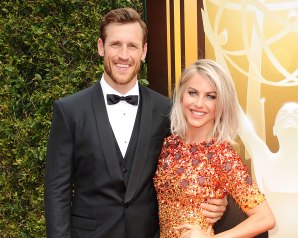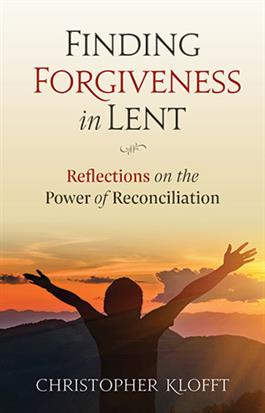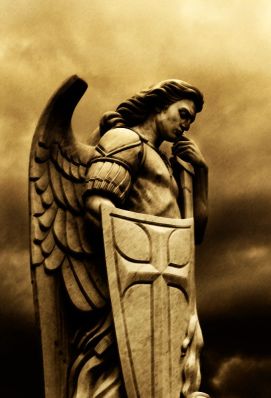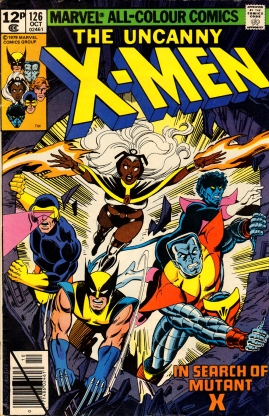Nun-Jas and the Heart of Christian Evangelization

Netflix saw me coming when it advertised it’s new summer series “Warrior Nun.” A modern fantasy show about demon-hunting nuns? Superhero aesthetics mixed with Catholicism? Yup, there was no way I was not going to check this out. I’ve watched the whole first season (10 episodes) twice and I thought I’d share some reflections on it.
First, the basic premise of the show: A 19-year old paralyzed orphan is brought back to life by a divine artifact that is supposed to make her God’s champion against the forces of darkness and also the field leader of an order of combat-trained religious sisters (pedantic alert: not actually nuns). The conflict? She doesn’t want the job. A Hero’s Journey ensues.
Second, is it any good? If you are looking for an action show that faithfully presents the Church, her teaching, and her spiritual traditions amidst fantasy circumstances…well, you’ll be disappointed. But if you want an urban fantasy show that is heavily washed in a Catholic aesthetic, with well-drawn and interesting characters, and, best of all, that actually portrays some faithful, heroic Catholics – along with some truly terrible ones – it could be worth 7 hours of your time.
That’s about all I can say without entering serious spoiler territory. If you continue reading, you either already know what happens or don’t care that you know!
While it takes most of the season to reveal everything, there are actually several factions in play, which makes it harder to clearly say who “the good guys” and “the bad guys” are. While some moral complexity makes for good storytelling, as viewers, we fundamentally need to know who to root for. I’d suggest that in Season 1 – at least until the final episode – the core conflict is between the Order and ArqTech. It was a refreshing change to see the big tech company motivated by hubris while the Church cautions prudence in technological advancement. There are even conversations between characters that express that faith and science don’t have to be in conflict, and in fact actually work better together. The revelation that this new technology has a seemingly transcendent origin is a nice touch.
Not all the Catholic characters are heroic and I suppose the more suspect ones do get more screen time. If this sounds bad, I’d also offer that pretty much none of the non-Catholic characters could be described as “heroic.” Some of these non-Catholic characters (including our protagonist) take verbal potshots at the faith. However, this never comes across as a blatant ideological decision on the showrunners’ part (even if it may well be). It generally makes sense why these characters would think and speak the way they do in the 21st century west. I would have preferred it if there had been more dialogue that defended the faith, but that was far less common. But I get the sense that the show lacks a Catholic consultant (if anyone from the show happens to read this, this Catholic theologian would be happy to fill that role). This would also explain the curious absence of the Mass and the Eucharist at any point during the show; this detail stood out to me the most in trying to understand these characters as “Catholic.”
The Catholic characters portray realistic character flaws. I suspect the intention was to show, “See? These holy people are not so holy after all,” but really, it came across as very, well, human. Cardinal Duretti is guilty of clericalism and makes bad choices to avoid scandal. Fr. Vincent has a criminal past. Mother Superion is prone to judgmentalism. Mary is not sure she is called to take vows, Camilla is over-enthusiastic and naïve, Lilith (an unfortunate name choice, to be sure) is over-ambitious, and Beatrice has same-sex attraction. This last reveal is supposed to come across as especially revelatory, but if she’s taken a vow of celibacy and is faithful to the Church (and Beatrice affirms her faith several times), does it matter? However, since they took one or two opportunities to suggest that Beatrice may be attracted to Ava, I fear for the development of this plot point in season 2. The showrunner himself has been pretty cagey about it, which leads this optimist to hope that it won’t go down a stupid road.
Turning to the good stuff, there are some genuinely excellent conversations about love and self-sacrifice. While not explicit, these are some of the most wonderful Catholic moments in the whole series, and almost all of them come from the character of Mary. She is the one who ends up as the best “evangelist” to Ava: she empathizes with Ava (albeit with some snarky tough love), but also invites her to a more selfless way of looking at her second chance at life, and she does this not with words, but with actions. Later, her loving intervention with Lilith provides one of the best scenes of the whole season. This is the greatest strength of the show: the central Christian teaching of self-emptying love for the good of others is demonstrated, and important characters experience a metanoia as a result, all without ever being preachy.
One last specific point needs special mention. The critical face turn – which occurs in the last 5 minutes of the whole season – was sad (and infuriated my wife). It’s not that it came out of nowhere – there are very subtle clues I noticed on my 2nd viewing – but it’s the loss of the only faithful male Catholic character in the whole 1st season (excepting the poor nameless monk who gets murdered halfway through the 1st episode). This may be deliberate in order to emphasize the power and agency of the female characters, but the dichotomy weakens that very message. Every male in the show ends up being evil, weak, or a victim. It’s not presented bluntly, but it’s there just the same. I hope this will change in the 2nd season.
The show ends on a cliffhanger, which might be awesome if we didn’t have to wait more than a year to see what happens next. But I do want to know what happens next, and there is great potential here to show the heart of Christianity lived out and the Catholic Church in a more heroic light than it generally gets shown, especially in the 21st century, and especially in genre fiction such as this.
As a final note, the author of the comic book on which this show is based (loosely – the original comic was actually more pro-Catholic, but at the ironic expense of cheesecake art) came up with the idea of the “warrior nun” when he read about a convent of religious sisters in Harlem who trained in the martial arts. Here’s another story of different warrior nuns: ones who go dangerously undercover to save women from human trafficking. Praise God for such bad-ass sisters in Christ!

 Some people who have been in my classes have heard me advance the thesis that most of history’s problems have a root in a misunderstanding of the place of sexuality in the Divine Image. I know I’m not alone in this line of thought; thinkers have advanced it since the earliest days of Christianity. I also realize that this cannot be understood too simply, as if to say, “sex” is the root of all human error. I think anyone who knows me knows that I am hardly so puritanical!
Some people who have been in my classes have heard me advance the thesis that most of history’s problems have a root in a misunderstanding of the place of sexuality in the Divine Image. I know I’m not alone in this line of thought; thinkers have advanced it since the earliest days of Christianity. I also realize that this cannot be understood too simply, as if to say, “sex” is the root of all human error. I think anyone who knows me knows that I am hardly so puritanical! Ok, work with me here on this one.
Ok, work with me here on this one. The movie even gives us an appropriately Satanic figure in Ghidorah, an alien to this world, who seeks to destroy both humanity and natural order, who became a temptation to go beyond the bounds of wisdom, and who is more powerful than humanity alone can withstand. As a result, the human race needs to rely on a power greater than itself in order to save the world.
The movie even gives us an appropriately Satanic figure in Ghidorah, an alien to this world, who seeks to destroy both humanity and natural order, who became a temptation to go beyond the bounds of wisdom, and who is more powerful than humanity alone can withstand. As a result, the human race needs to rely on a power greater than itself in order to save the world. As I noted in my last post, I had to take some time away from posting here to work on another project. That went pretty successfully, so I have some freedom to come back here. I didn’t make it back before the end of Lent: I barely made it back before the end of Easter! For those who had a chance to use my Lenten reflection booklet, I hope it was a good companion on your journey. It seems a little odd to me that we have books of reflection for Advent and Lent, but not ones for the joyous and glorious seasons of Christmas and Easter. Hmmm…this is something to mention to my editor…
As I noted in my last post, I had to take some time away from posting here to work on another project. That went pretty successfully, so I have some freedom to come back here. I didn’t make it back before the end of Lent: I barely made it back before the end of Easter! For those who had a chance to use my Lenten reflection booklet, I hope it was a good companion on your journey. It seems a little odd to me that we have books of reflection for Advent and Lent, but not ones for the joyous and glorious seasons of Christmas and Easter. Hmmm…this is something to mention to my editor…
 I’m not going to talk about the Covington kids or MAGA hats or
I’m not going to talk about the Covington kids or MAGA hats or 

 Note: This post first appeared as a special article in a February issue of Assumption College’s student newspaper Le Provocateur. With the imminent arrival of Infinity War in theaters this Thursday, I decided to re-print it here.
Note: This post first appeared as a special article in a February issue of Assumption College’s student newspaper Le Provocateur. With the imminent arrival of Infinity War in theaters this Thursday, I decided to re-print it here.